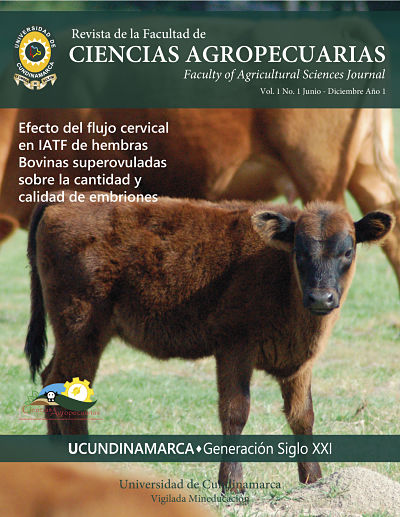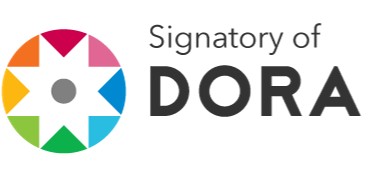Growth of raphanus sativus l. with weeds plantago media l. and polygonum nepalense meins
DOI:
https://doi.org/10.36436/24223484.184Keywords:
fertilización, crecimiento, competencia, variables fisiológicas.Abstract
The growth of radish (Raphanus sativus L.) was analyzed with plantain (Plantago media L.) and gualola (Polygomun nepalense Meins) weeds. The experimental design was a randomized complete block design with six treatments and three replications. The treatments were fertilization levels (0%, 50% and 100% fertilization combined with clean and weedy cultivation; T1 to T3: three fertilizations with weedy cultivation and T4 to T6: three fertilizations with clean cultivation, respectively). Biomass, leaf area, crop growth rate (CGR), leaf area index (LAI), net assimilation rate (NAR), relative growth rate (RGR), weed cover, frequency and density were evaluated. The highest dry biomass and leaf area of radish were recorded in treatment T5 with values of 4.573 g.plant-1 and 4.573 cm2 respectively in week nine, while T3 recorded 3.17 g.plant-1 and leaf area of 851 cm2, with no significant differences. The highest CGR was reached by radish in T5 (0.48) in week 7 and T4 (0.62) in week 9, and LAI (0.28) in T6. The CGR and TAN varied for all crop and weed treatments. The weed species present in the crop: Plantago media maintained the highest density throughout the crop period, reaching more than 2000 individuals/m2 and a frequency of 94%. Weed cover in the weedy treatments reached 60% (T1). The best development of radish crops according to evaluated parameters was presented by T5.Downloads
References
Casseres E.1980. Producción de hortalizas. Instituto interamericano de ciencias agrícolas. san jose, costa rica. 3 edición 272-275.
Montero S.M;B.K.singh y R. Taylor. 2006. Evaluación de seis estructuras de producción hidropónica diversificada en el trópico húmedo de costa rica. Tierra Tropical 2(1),27-37.
Thompson H.C. and W.C. Kelly. 1957. Vegetable Crops, McGraw-Hill Book Co., NY. Akobundu, O. (1987). Weed Science in the tropics: Principles and Practices. John Wiley & Sons INC. Londres. 522 p.
Fink A. 1988 fertilizantes y fertilización: fundamentos y métodos para la fertilización.1-5.
Labrada R. y Parker C. 1994. Weed Control in the context of Integrated Pest Management. Weed Labrada R. y Parker C.
(7)Poorter H. Y E. Garnier. 1996. Plant growth analysis: an evaluation of experimental design and computation methods J. Exp.bot.47(302),1343-1351.
Marin D. 1989. Análisis de crecimiento de Cunavalia ensiformis (L) DC. Bajo diferentes arreglos espaciales época y densidad de siembra.Rev.Fac.Agron.14,205-219.
Gardner, F., Pearce, R., Mitchell, R. 1985. Physiology of Crop Plants. Ames IA: Iowa State University Press.
Gómez Grande P, Pérez Sarmentero J. Efectos sobre el cultivo de Rábano rojo (Raphanus sativus, L) de tres fertilizantes orgánicos.VIII Congreso SEAE Murcia 2008.
Barrera Jaime, Suárez Diego, Melgarejo Luz Marina; análisis de crecimiento en plantas, Laboratorio de fisiología y bioquímica vegetal. Departamento de biología. Universidad Nacional de Colombia. 2004.
Downloads
Published
How to Cite
Issue
Section
License
Copyright (c) 2015 REVISTA CIENCIAS AGROPECUARIAS

This work is licensed under a Creative Commons Attribution-NonCommercial-NoDerivatives 4.0 International License.







